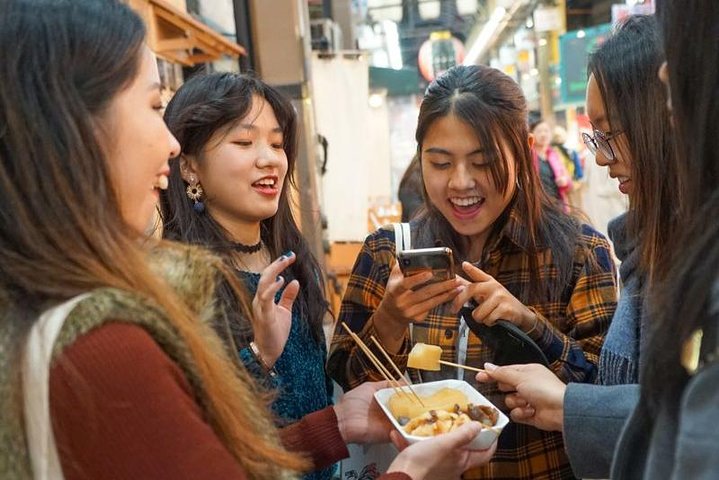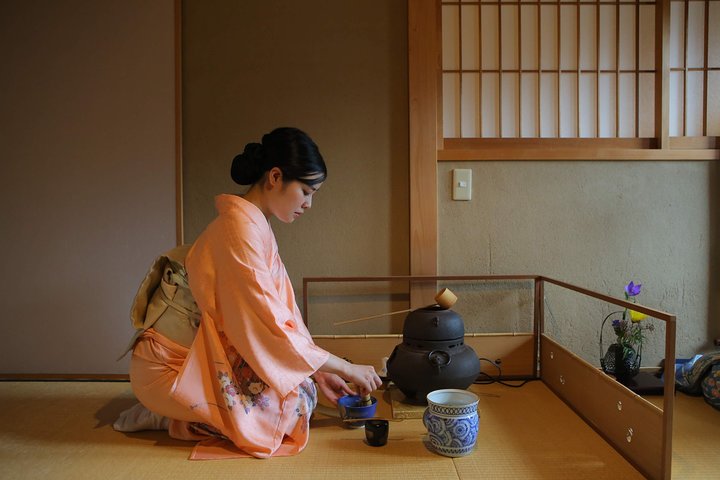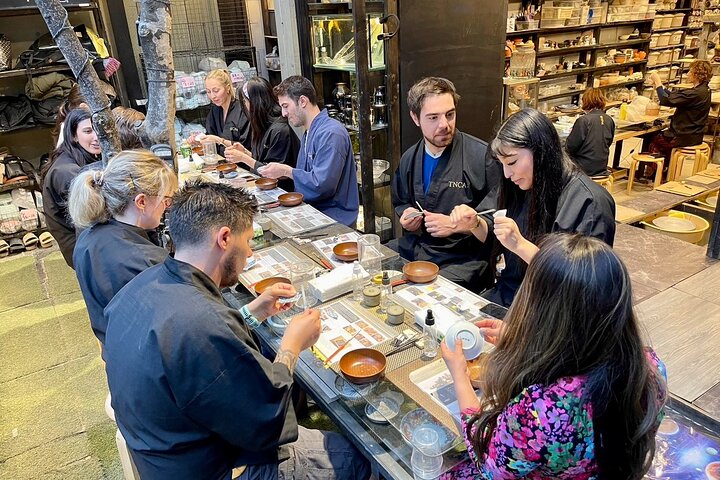A Relaxed 14-Day Japan Itinerary: Osaka, Kyoto, and Tokyo for Foodies, Coffee Lovers, and Local Life
Japan’s Kansai and Kanto regions are perfect for a relaxed two-week journey. You’ll eat your way through Osaka’s neon-lit food streets, find stillness in Kyoto’s temples and tea houses, then glide into Tokyo’s creative neighborhoods for coffee, vintage shopping, and night views. This plan favors unhurried mornings, neighborhood strolls, and budget-wise choices with the occasional splurge.
Osaka, Kyoto, and Tokyo each tell a chapter of Japan’s story. Osaka grew from castle town to merchant powerhouse, famous for “kuidaore”—to eat until you drop. Kyoto, once the imperial capital, keeps the flame of tradition—silk kimono, tea ceremony, and gardens designed to frame the seasons. Tokyo, rebuilt and reimagined, overlays historic lanes with cutting-edge design, pop culture, and world-class dining.
Practicalities: Pick up an IC transit card (ICOCA/Suica) at the airport for tap-and-go rides and convenience-store snacks. Cash is still useful at markets and tiny eateries, but cards are widely accepted. Consider luggage forwarding (takkyubin) between cities to keep your travel days light. For this route, individual train tickets are more cost-effective than a nationwide rail pass.
Osaka
Welcome to Japan’s friendliest big city and undisputed street-food capital. From Dotonbori’s glowing signs to Shinsekai’s retro alleys, Osaka rewards wanderers with takoyaki stands, izakaya counters, and blink-and-you’ll-miss-it kissaten serving perfect toast sets and pour-overs.
Base yourself near Namba/Shinsaibashi for easy walks to Kuromon Market, Amerika-mura boutiques, and the subway hub. Spend your evenings grazing—this is where locals refuel after work and talk loudly about what to eat next.
Days 1–4: Settle In, Snack Often, Explore Neighborhoods
- Arrival and getting into town: Fly into Kansai International (KIX). The Nankai Rapi:t to Namba takes ~38 minutes (~$11–12). For flights, search Trip.com Flights or Kiwi.com. For regional rail in Japan, see Trip.com Trains.
- Classic Osaka food crawl: Start in Dotonbori and Ura-Namba backstreets. Try takoyaki at Takoyaki Wanaka (crisp shell, molten center), okonomiyaki at Okonomiyaki Chitose (fluffy, lard-kissed griddle cakes), and kushikatsu in Shinsekai (skewers, dip once!). Finish with Rikuro cheesecake while the bell rings for a fresh batch.
- Markets and morning culture: Kuromon Ichiba for tuna-topped onigiri, uni spoons, and seasonal fruit. Walk off lunch in Amerika-mura (vintage shops, local streetwear) and Nakazakicho (laneway cafés in prewar houses).
- Coffee breaks: Lilo Coffee Roasters (tiny, nerdy bar with rotating single origins), Takamura Wine & Coffee Roasters (industrial-chic roastery, slow afternoons), Saredo Coffee in Nakazakicho (hand-drip and house bakes).
- Local unwind: Spa World in Shinsekai (themed baths) or a riverside sunset walk along Dotonbori-gawa. If you want a castle fix, circle Osaka Castle’s moat and leafy park; the museum gives context to Toyotomi Hideyoshi’s grand ambitions.
Recommended stays (budget-first, walkable):
- Steps from Dotonbori and subway: Hotel Sunroute Osaka Namba (value, compact rooms, unbeatable location).
- Ultra-budget near Shin-Imamiya: Hotel Taiyo (simple, wallet-friendly base).
- Connected to Namba Station: Swissotel Nankai Osaka (splurge for convenience).
- Family near Universal Studios: Hotel Universal Port or Universal Bay Condominium.
Browse more options: Hotels.com Osaka or VRBO Osaka.
Foodie-forward tours (great for “living like a local”):
- Osaka Food Tour - 13 Delicious Dishes at 5 Local Eateries — evening tastings in local-only haunts.

Osaka Food Tour - 13 Delicious Dishes at 5 Local Eateries on Viator - Kuromon Market Food Walking Tour (6 stops, 6 tastes) — taste takoyaki, wagyu bites, and seasonal specialties.

Kuromon Market Food Walking Tour in Osaka (6 stops, 6 tastes) on Viator - Tea Ceremony Experience in Osaka (Dotonbori) — a calm, culture-rich counterpoint to the neon buzz.

Tea Ceremony Experience in Osaka Doutonbori on Viator
Where to eat and drink (specific picks):
- Breakfast: In a hurry—konbini egg sando and canned coffee; sit-down—Inoda Coffee Namba branch for Kyoto-style coffee and toast sets.
- Lunch: Endo Sushi (Osaka Central Market; famed toro nigiri flights), Tokaichi curry udon (thick, peppery broth), Hanamaruken (shoyu ramen with slow-braised pork ribs).
- Dinner: Okonomiyaki Chitose (Shinsekai), Hozenji Yokocho’s cozy izakawa alleys for grilled skewers and sake, Torame Yokocho food hall for grazing under lanterns.
- Coffee/dessert: Lilo Coffee Roasters; Takamura Wine & Coffee; Gram or A Happy Pancake for fluffy “soufflé” pancakes.
Budget tips in Osaka: Eat lunch sets (teishoku) for savings; ride the JR “Special Rapid” and Osaka Metro with an IC card; avoid peak hours when ticket surcharges and lines spike.
Travel to Kyoto (Morning of Day 5)
- Fastest: Shinkansen from Shin-Osaka to Kyoto ~15 minutes (~$25). Trip.com Trains.
- Best value: JR Special Rapid from Osaka Station to Kyoto Station ~29 minutes (~$4–5).
Kyoto
Kyoto is a city of textures: bamboo groves breathing in the wind, tatami underfoot, stone lanes in Gion at dusk. With 17 UNESCO sites and centuries of artisan craft, it’s the place to slow down, sip matcha, and let time stretch.
Balance famous sights with quiet corners: early Fushimi Inari, a backstreet tofu lunch, a riverside coffee in Arashiyama. The goal is not to see everything—it’s to feel the cadence of old Japan.
Days 5–9: Temples, Tea, Arashiyama, and Markets—Gently
- Fushimi Inari at dawn for tranquil torii-lined paths; reward yourself after with espresso at Vermillion - eXpress by the station.
- Arashiyama day: Bamboo Grove in the early morning, Tenryu-ji’s strolling gardens, monkey park views, and a slow coffee along Katsura River.
- Nishiki Market: Try sesame-crusted tofu donuts, tamagoyaki on sticks, and yuba croquettes; peek at Aritsugu for artisan knives.
- Gion & Pontocho: Twilight walks through machiya townhouses; keep voices low—this is a residential area with centuries-old etiquette.
- Uji/Mt. tea: Half-day to Uji for matcha tastings and Byodo-in views, or stay in Fushimi for sake breweries and mellow tastings.
Recommended stays (central, great value):
- Convenient and modern: Hotel M's Plus Shijo Omiya.
- Design hostel with private options: Piece Hostel Sanjo.
- Compact rooms in a prime spot: Hotel M's Est Shijo Karasuma.
- Midrange comfort: Kyoto Tokyu Hotel. Splurge: Kyoto Brighton Hotel or The Ritz-Carlton, Kyoto.
Explore more: Hotels.com Kyoto or VRBO Kyoto.
Immersive Kyoto activities:
- Kyoto Gion Geisha District Walking Tour — learn the real stories behind geiko and maiko as lanterns glow.

Kyoto Gion Geisha District Walking Tour - The Stories of Geisha on Viator - Top-Rated Arashiyama Tour: Bamboo, Monkeys, Zen Garden & Secrets — a guided route that dodges crowds and adds context.

Top-Rated Arashiyama Tour: Bamboo, Monkeys, Zen Garden & Secrets on Viator - Authentic Kyoto Tea Ceremony: Camellia Flower Teahouse — a serene, small-group ceremony in a traditional space.

Authentic Kyoto Tea Ceremony: Camellia Flower Teahouse on Viator
Cafés and eateries (local favorites):
- Coffee: Weekenders Coffee (hidden roastery by a parking lot), % Arabica (Higashiyama river views), Kurasu by Kyoto Station (precision pours), Walden Woods (airy white space, seasonal beans).
- Lunch: Omen for handmade udon with mountain veggies, Musashi Sushi (belt sushi, reliable and affordable), Menya Inoichi (clear-broth ramen with elegant dashi).
- Dinner: Gion Tanto (homey obanzai), Okonomiyaki Katsu (neighborhood legend; big portions), Yakiniku Hiro for marbled Kyoto wagyu—split a set to stay on budget.
- Sweets/tea: Ippodo for tasting flights; Demachi Futaba for fresh mochi (go before sell-out).
Optional mellow day trips: Nara for bowing deer and Great Buddha (Todaiji), or Uji for matcha street and riverside walks. If you prefer a guided option that bundles highlights: Kyoto Must-see Spots & Nara Park One Day Tour (operates from either Kyoto or Osaka).

Travel to Tokyo (Morning of Day 10)
- Shinkansen Nozomi: Kyoto → Tokyo Station ~2h15 (~$95–110, reserved seat). For times and fares: Trip.com Trains.
- Budget alternative: Highway bus ~7–8 hours (~$30–50). Stick to a morning departure to keep the flow relaxed.
Tokyo
Tokyo is a mosaic of villages stitched together by rail lines: lantern-lit alleys, minimalist coffee bars, knife-sharp vintage shops, and pop-bright crossings. Choose a few neighborhoods each day and let curiosity lead.
Shinjuku for sky-high views and izakaya; Shibuya and Harajuku for trends and parks; Asakusa and Yanaka for old-town charm. Eat at depachika food halls when your feet need a break—Japan turns department-store basements into culinary treasure troves.
Days 10–14: Neighborhoods, Coffee, Food Halls, Easy Day Trips
- Asakusa and “Old Tokyo”: Senso-ji at opening time, stroll Nakamise for ningyo-yaki, then detour to Kappabashi for kitchenware. Sip a refined pour-over at Coffee Mameya Kakeru’s cousin, Koffee Mameya (standing-only, expert guidance), or hop to Bridge or Leaves Coffee in Asakusa.
- Shibuya–Harajuku–Omotesando: Cross Shibuya’s scramble (a postwar traffic experiment turned icon), browse Cat Street’s boutiques, admire Omotesando’s architecture, and refuel with yuzu-shio ramen at Afuri. Coffee: About Life Coffee Brewers (Shibuya) or Blue Bottle Aoyama.
- Shinjuku evenings: Isetan depachika for snacks to-go, Omoide Yokocho’s grill smoke and tiny bars, Golden Gai’s pocket lounges. For sit-down, Tempura Tsunahachi (since 1923) or a standing-sushi sprint at Uogashi Nihon-Ichi.
- Slow-living side quests: Shimokitazawa for thrifting and indie cafés; Nakameguro for canal walks and Onibus Coffee; Kiyosumi-Shirakawa’s roasters (Arise, Blue Bottle’s roastery), then a garden break at Kiyosumi Teien.
- Optional day out: Mt. Fuji/Hakone loop for lake views and ropeway vistas, or Nikko for waterfalls and ornate shrines.
Recommended stays (location and value):
- Steps from Shinjuku Station: Hotel Sunroute Plaza Shinjuku (excellent transit hub, midrange pricing).
- Shinjuku with personality: Hotel Gracery Shinjuku (Godzilla peeks over the tower).
- Great for families/space: Keio Plaza Hotel Tokyo. Splurge picks: The Peninsula Tokyo, The Ritz-Carlton, Tokyo, or Aman Tokyo.
See more: Hotels.com Tokyo or VRBO Tokyo.
Curated experiences (relaxed and insightful):
- Tokyo: Shinjuku Food Tour (13 Dishes at 4 Local Eateries) — izakaya classics, yakitori, and street-side discoveries.

Tokyo: Shinjuku Food Tour (13 Dishes at 4 Local Eateries) on Viator - Kintsugi Experience: Art of Golden Joinery — repair pottery with gold lacquer and take home your creation.

Kintsugi Experience: Art of Golden Joinery in Tokyo on Viator - Tokyo Bay Yakatabune Dinner/Day Cruise — a Heian-era leisure tradition updated with skyline views and seasonal dishes.

Tokyo Bay Yakatabune Dinner/Day Cruise with Japan Show and Drinks on Viator
Where to eat (specifics):
- Coffee: Onibus Coffee (Nakameguro roastery, terrace by the tracks), Fuglen (Scandi vibes in Shibuya), Blue Bottle Aoyama (leafy corner), Glitch (light roasts near Jinbocho).
- Breakfast: Shinjuku’s Boul’ange for croissants, Sarabeth’s for fluffy pancakes, or grab a department-store bakery set.
- Lunch: Afuri (yuzu ramen), Tonkatsu Maisen (melt-in-the-mouth pork), Tsukiji Outer Market for tamagoyaki rolls and tuna skewers.
- Dinner: Tempura Tsunahachi (classic technique), Uogashi Nihon-Ichi standing sushi (fast and fresh), tiny yakitori bars in Omoide Yokocho for smoky skewers and highballs.
Tokyo transit notes: Use your IC card everywhere, including convenience stores. For airport runs: Narita Express to Shinjuku/Tokyo Station (~50–70 minutes), or the Keikyu/Asakusa Line from Haneda (~30–40 minutes). Search flights on Trip.com Flights or Kiwi.com.
Suggested Multi‑Day Flow
- Days 1–4: Osaka — Dotonbori, Shinsekai, Kuromon Market, castle park, café-hopping in Nakazakicho; optional tea ceremony.
- Day 5 (AM): Osaka → Kyoto — settle near Shijo/Karasuma for easy trams and markets.
- Days 5–9: Kyoto — Fushimi Inari at dawn, Arashiyama, Nishiki Market, Gion evening walk, tea ceremony; optional Nara or Uji.
- Day 10 (AM): Kyoto → Tokyo — base in Shinjuku for effortless JR/metro connections.
- Days 10–14: Tokyo — Asakusa and old-town strolls, Shibuya–Harajuku day, Shinjuku nights, coffee circuits (Nakameguro, Kiyosumi-Shirakawa), optional Mt. Fuji/Hakone or Nikko day trip.
Estimated transit costs (one-way, per adult): KIX → Namba (~$11–12), Osaka → Kyoto JR Special Rapid (~$4–5) or Shinkansen (~$25), Kyoto → Tokyo Shinkansen (~$95–110). With this routing, a nationwide rail pass usually doesn’t pay off; buy point-to-point.
Two weeks in Japan doesn’t have to be a blur. This itinerary is built for slow mornings, flavorful afternoons, and candlelit nights, all under one simple rule—eat well, stroll often, and let each neighborhood introduce itself.
By the time you depart Tokyo, your camera roll will be full of lanterns, latte art, and those quiet garden moments that linger long after the flight home.

